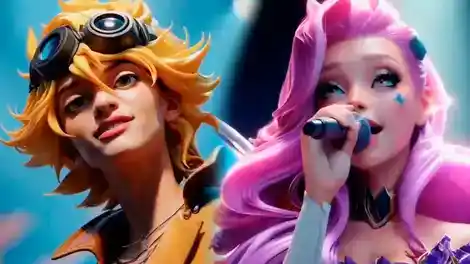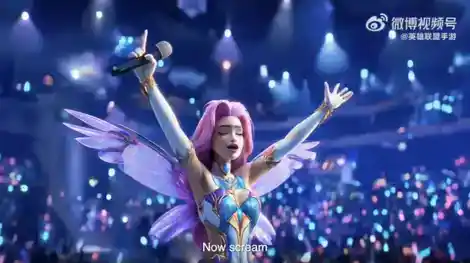Riot Under Fire As League of Legends Wild Rift Video Fans Shocks Fans
This week, the League of Legends mobile spin-off Wild Rift found itself in the middle of controversy after an AI-generated video posted on the game’s Chinese Weibo account triggered backlash from the community. Intended to celebrate Wild Rift’s third anniversary, the video was quickly deleted after fans widely criticized its jarring visuals and low production quality.
While Riot Games responded with a public statement acknowledging the misstep, the damage was already done. The situation raised serious concerns about the studio’s creative direction, its use of AI, and the broader implications for both fans and artists.
The AI Video That Missed the MarkThe now-removed video was filled with visual errors that made it hard to watch. Characters like Jinx and Seraphine were rendered with bizarre inconsistencies—Jinx’s tattoos shifted from shot to shot, weapons looked like they were lifted from unrelated games, and even spelling mistakes crept into the opening title. A particularly strange moment featured melting goggles and floating stage lights that resembled something out of a surrealist painting. |
 |
Fans were quick to notice the low quality, and the comparisons began pouring in. Many drew parallels to other high-concept animation projects like KPop Demon Hunters, suggesting the AI-generated video was trying to imitate a similar style without the finesse.
The end result wasn’t just messy; it felt disrespectful to a community that’s grown used to polished, high-effort promotional content from the League of Legends brand.
Riot’s Response Falls Flat
Following the backlash, Wild Rift’s executive producer released a statement apologizing for the video, calling it “creator-made” and admitting that it didn’t meet the studio’s quality standards. He added that Riot would do better in the future and acknowledged the community’s feedback.
But for many players, the apology felt too corporate and vague. Calling the video “creator-made” didn’t clarify whether Riot had commissioned the piece, produced it internally, or outsourced it to a third-party studio. This lack of transparency only added fuel to the fire.
What’s clear is that the video was not vetted carefully, and it’s raising questions about Riot’s internal content review pipeline, especially when dealing with regional teams and platforms.
 |
A Step Back from Riot’s Creative LegacyFor a company known for its groundbreaking animation work—like the globally acclaimed Arcane series or the K/DA music videos—this AI video felt like a disappointing departure. Riot has invested millions in developing the League of Legends universe through music, cinematics, and storytelling. This video, by contrast, looked like a quick attempt to save costs while sacrificing the studio’s usual standards. |
This shift doesn’t just hurt Riot’s image. It also affects the perception of Wild Rift as a competitive game worth investing time into. For players focused on improving their rank or looking to boost their skills in mobile esports, presentation matters. It sets the tone for how seriously the game is taken by its developers and its community.
Community Pushback and Artist Concerns
The outrage wasn’t limited to the video’s visuals. Many fans and artists expressed frustration that Riot, a company capable of funding high-quality productions, chose to lean into generative AI—a tool often criticized for undermining traditional artistry. The use of AI also reignited debates about whether companies are replacing skilled professionals in favor of quicker, cheaper alternatives.
The fan base has long supported League of Legends because of its attention to detail and its rich artistic identity. Cutting corners with AI threatens that trust. In a community where visuals, lore, and style are a huge part of the experience, this misstep wasn’t just seen as lazy—it felt like a betrayal.
The Bigger Picture: AI and the Future of Game Promotion
This situation highlights the ongoing tension between innovation and authenticity in the gaming industry. While AI can be a powerful tool, it’s clear that relying too heavily on it without proper oversight can lead to embarrassing results. For competitive games like LoL and Wild Rift, where players are already working hard to boost their performance and climb the ladder, seeing the publisher deliver low-effort content sends the wrong message.
Creative expression plays a big role in keeping the player base engaged, especially for those who play not just to win, but to be immersed in a vibrant, evolving world. Riot’s stumble here serves as a reminder that players expect more than quick, AI-generated filler—they want substance and soul behind the brand they support.
Final Thoughts
The AI video incident is more than just an isolated mistake. It reveals cracks in how major studios like Riot manage their creative output, especially on global platforms. While the company has promised to learn from the experience, fans will be watching closely to see if future content reflects that commitment.
If Riot wants to maintain its position at the top of the competitive gaming world and keep players invested in their League of Legends journey—whether on PC or mobile—it must continue prioritizing quality, creativity, and respect for the audience’s intelligence.
For now, Wild Rift players are left with a reminder that no matter how advanced AI gets, it can’t replicate the passion and vision that brought LoL to the top in the first place.

GG Boost, the Best Elo Boosting Experience!
 Deutsch
Deutsch  Français
Français  Español
Español  Português
Português